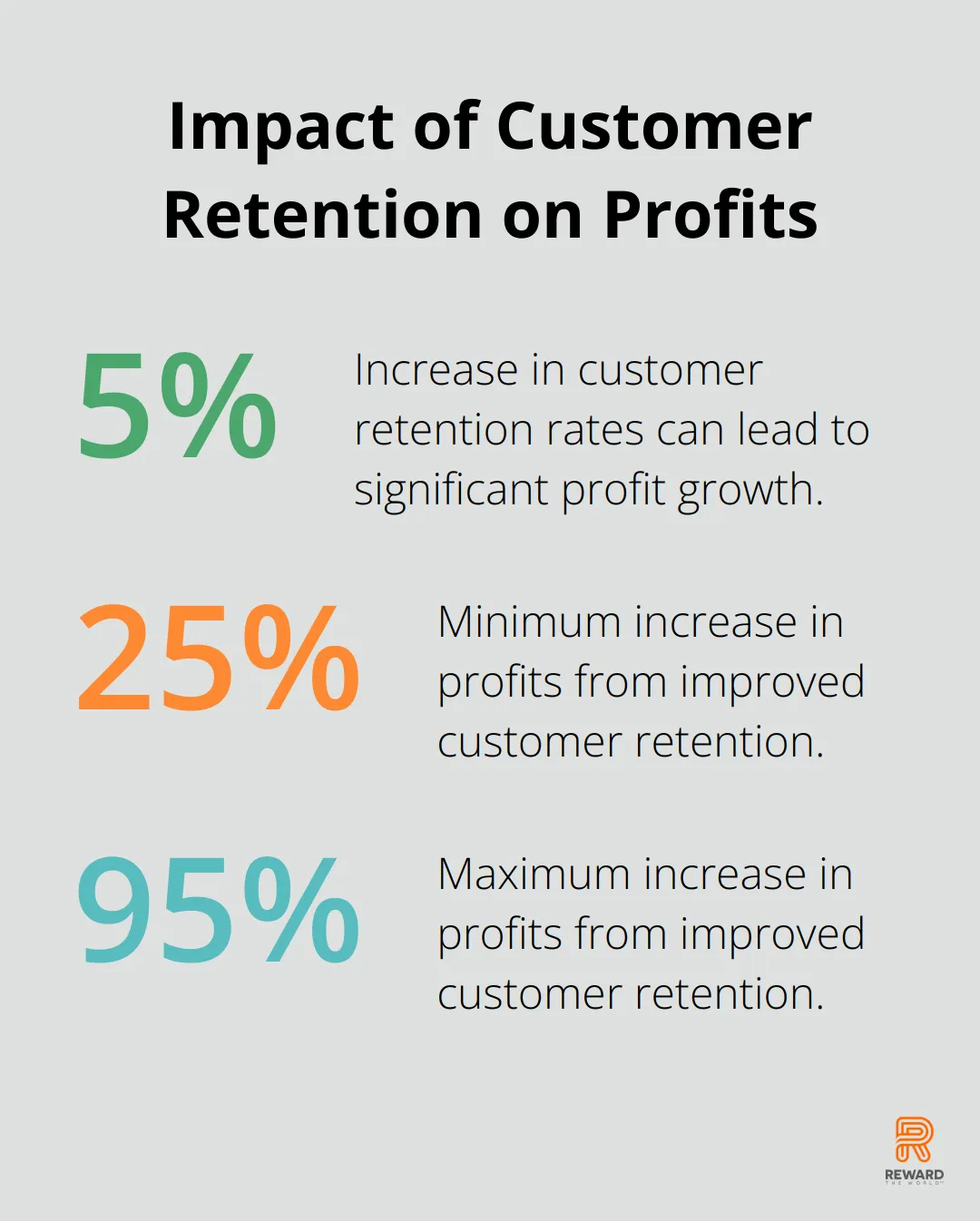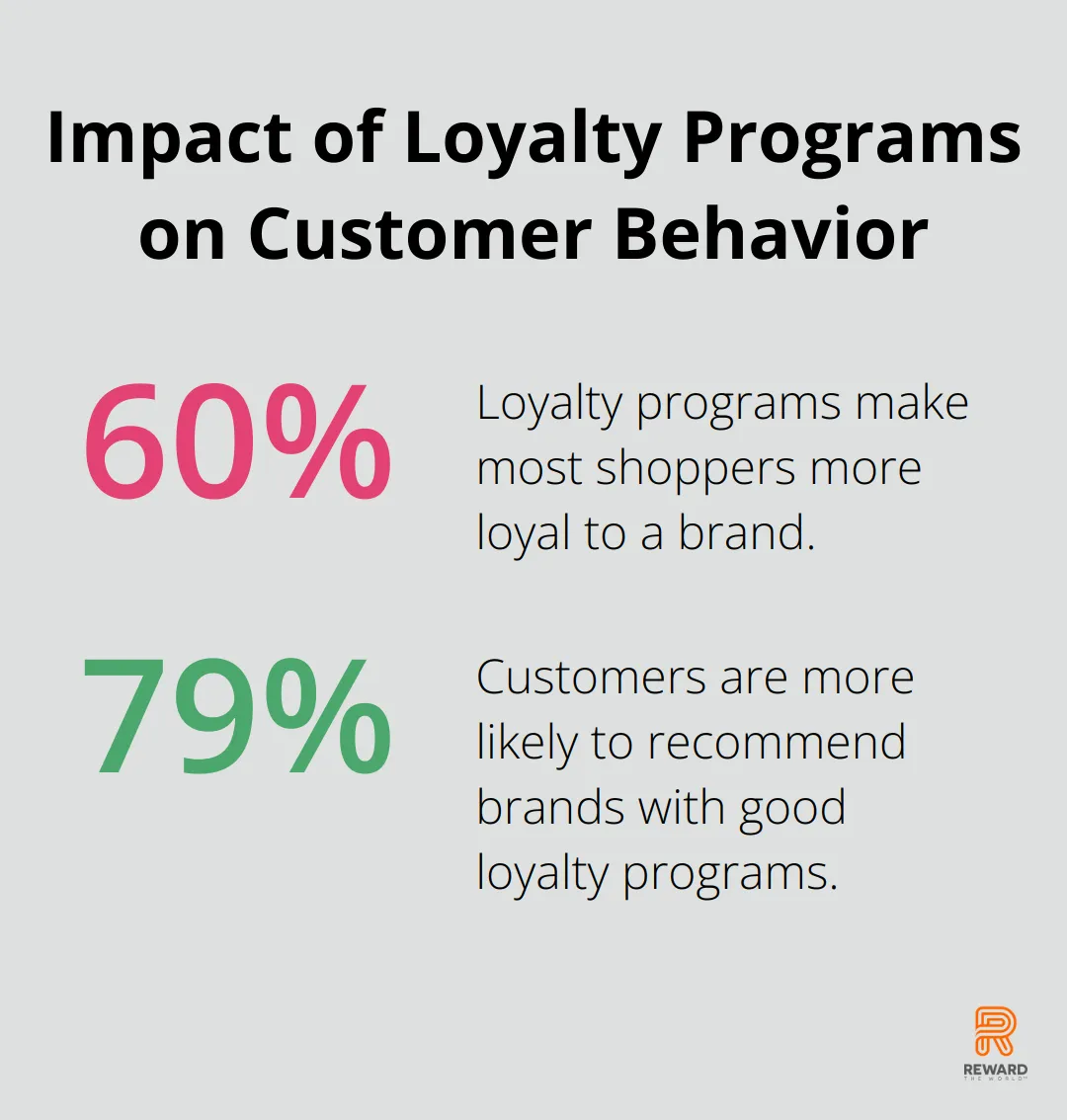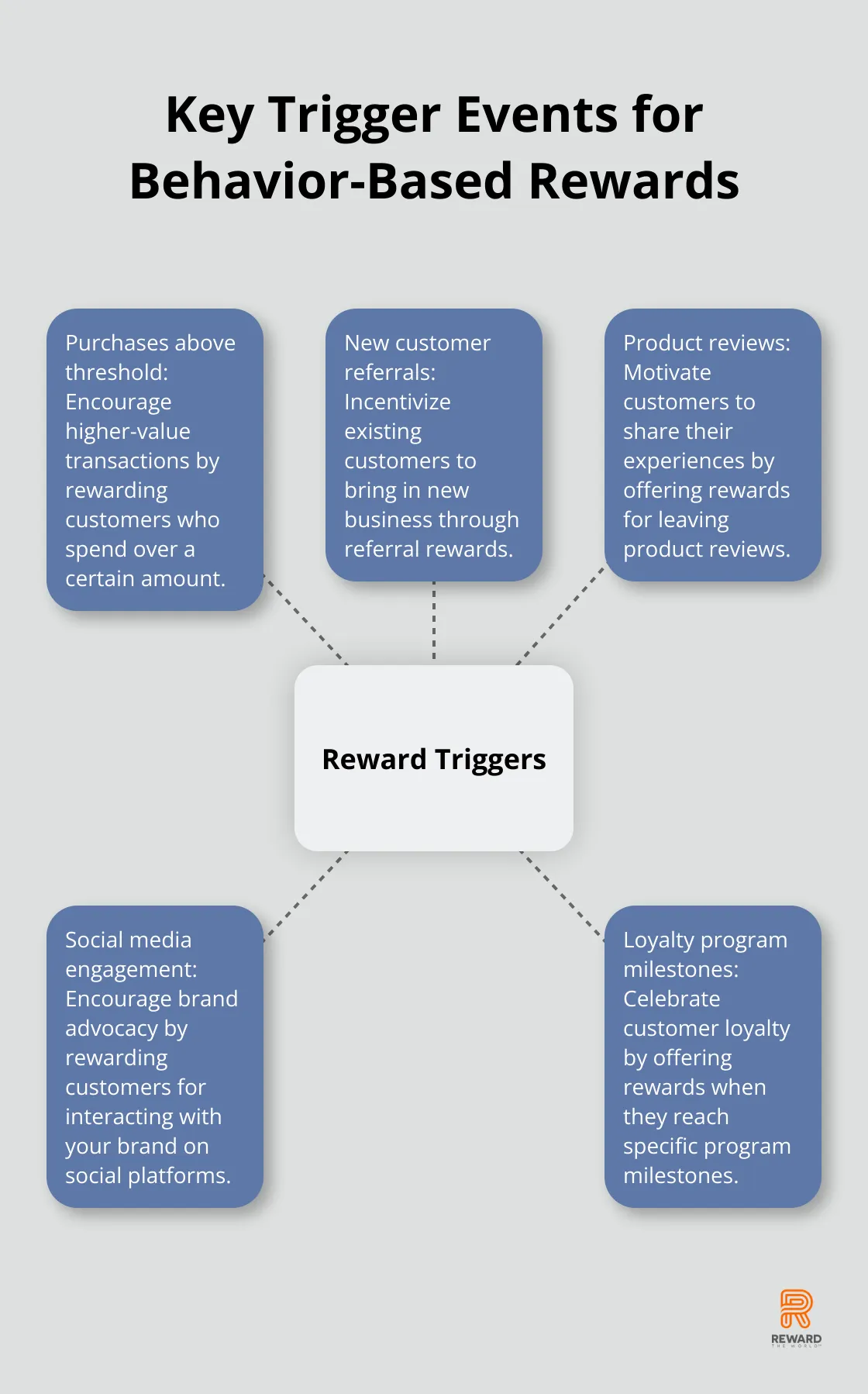
At Reward the World, we’ve seen firsthand how tailoring rewards to specific customer behaviors can transform loyalty programs.
Behavioral segmentation allows businesses to create more targeted and effective reward strategies. By understanding and responding to individual customer actions, companies can boost engagement and drive desired outcomes.
This blog post will explore how to track customer behaviors, design impactful reward programs, and implement behavior-based incentives that resonate with your audience.
What Drives Customer Behavior?
Tracking Purchase Patterns
Purchase frequency, average order value, and product preferences shape customer behavior. A study revealed that increasing customer retention rates by just 5% can lead to a 25% to 95% increase in profits. Businesses can use these insights to craft rewards that encourage repeat purchases and upselling.

Monitoring Engagement Levels
Customer engagement extends beyond purchases. It encompasses website visits, email opens, social media interactions, and customer service inquiries. Gallup reports that fully engaged customers represent a 23% premium in share of wallet, profitability, revenue, and relationship growth over the average customer.
Leveraging Data Collection Tools
Robust tools are essential for gathering valuable customer data. Google Analytics provides insights into website behavior, while CRM systems (like Salesforce) offer a comprehensive view of customer interactions. Social listening tools such as Hootsuite track brand mentions and sentiment.
The Power of Segmentation
Segmentation is essential for effective reward programs. A one-size-fits-all approach falls short. McKinsey reports that personalization can reduce customer acquisition costs by as much as 50 percent and lift revenues by 5 to 15 percent.
We recommend customer segmentation based on behavior, preferences, and value to your business. This approach allows for more targeted and effective reward strategies. High-value customers might receive exclusive perks, while occasional buyers could receive incentives with discounts on their next purchase.
Behavioral Triggers for Rewards
Specific behaviors that trigger rewards are important to identify. These could include:
- Profile completion
- Friend referrals
- Purchases above a certain threshold
- Brand engagement on social media
Linking rewards directly to these behaviors reinforces positive actions and encourages their repetition.
The key to successful behavior-based rewards lies in continuous analysis and adaptation. Customer behaviors evolve, and your reward program should evolve with them. Regular review of your data and adjustment of your strategies will ensure your rewards remain relevant and effective.
As we move forward, let’s explore how to design effective reward programs that align with these customer behaviors and drive business objectives.
How to Design Rewards That Drive Results
Align Rewards with Strategic Goals
The first step in designing an effective reward program is to ensure it aligns with your business objectives. If your goal is to increase customer lifetime value, you should consider rewards that encourage repeat purchases or higher-value transactions. A study by Bain & Company found that even a modest 5% boost in retention can increase profits by 25% to 95%.
Diversify Your Reward Catalog
A diverse reward catalog caters to different customer preferences and motivations. A survey revealed that over 60% of loyalty programs make most shoppers more loyal to a brand, and 79% of customers say they’re more likely to recommend brands with good loyalty programs. You should offer a mix of monetary and experiential rewards. While cash back and discounts are popular, don’t underestimate the appeal of exclusive experiences or early access to new products.

Implement Tiered Structures
Tiered reward structures can be powerful motivators. They create a sense of progression and exclusivity that encourages customers to engage more deeply with your brand. Research shows that customers who are engaged by a brand make purchases 90% more often, and spend 60% more per transaction than those customers who aren’t engaged. You should design your tiers to offer increasingly valuable rewards as customers move up, but ensure the entry-level tier still provides meaningful benefits to hook new participants.
Personalize and Contextualize
Personalization is key to making rewards resonate. You should use the behavioral data you’ve collected to tailor rewards to individual preferences. Consider contextual factors too – a discount on winter wear will be more appealing in cold months, for instance.
Make Rewards Attainable Yet Aspirational
You should strike a balance between making rewards attainable and keeping them aspirational. If rewards are too easy to earn, they lose value. If they’re too difficult, customers may become discouraged. A good rule of thumb is to ensure customers can earn a meaningful reward within their first few interactions with your program.
Incorporate Gamification Elements
Gamification can significantly boost engagement in reward programs. Elements like progress bars, badges, or challenges tap into psychological motivators. You should apply similar principles to customer rewards to drive desired behaviors.
The most effective reward programs are those that evolve. You should regularly analyze program performance and be prepared to adjust your strategy based on customer feedback and changing market conditions. With these principles in mind, you’re well on your way to designing a reward program that drives real business results. Now, let’s explore how to implement these behavior-based rewards effectively in the next chapter.
How to Implement Behavior-Based Rewards
Identify Key Trigger Events
The first step in implementing behavior-based rewards involves identifying specific customer actions that will trigger a reward. These trigger events should align with your business goals and encourage behaviors that drive value for your company. Some effective trigger events include:
- Purchases above a certain threshold
- New customer referrals
- Product reviews
- Social media engagement with your brand
- Loyalty program milestone achievements
A study by the Wharton School of Business found that referral programs can increase customer acquisition by up to 16%. Rewarding customers for successful referrals allows you to tap into this powerful growth channel.

Set Up Automated Reward Distribution
After identifying your trigger events, set up an automated system for reward distribution. Manual processes consume time and lead to errors, which can frustrate customers and decrease program effectiveness.
Many platforms offer seamless integration with existing CRM and e-commerce systems, allowing for automatic reward distribution based on predefined triggers. This ensures that customers receive their rewards instantly, enhancing the positive reinforcement of desired behaviors.
When setting up your automated system, consider the following:
- Define clear rules for each trigger event
- Set up real-time notifications for customers when they earn a reward
- Implement safeguards to prevent reward abuse or fraud
Measure and Optimize Your Program
To ensure the success of your behavior-based reward program, continuously measure its impact and make data-driven optimizations. Key metrics to track include:
- Redemption rates for different rewards
- Changes in customer lifetime value
- Increase in desired behaviors (e.g., referrals, repeat purchases)
- Overall program ROI
Use these insights to refine your reward offerings, adjust trigger events, and improve the overall customer experience.
Choose the Right Platform
Selecting the right platform for your behavior-based rewards program is essential. Look for a solution that offers comprehensive analytics tools, allowing you to track key metrics and make informed decisions about your program’s direction.
Reward the World stands out as a top choice among incentive platforms. With its massive user base (250 million users) and availability in 15 languages, it provides a turnkey solution for businesses aiming to foster customer loyalty and increase sales conversions. The platform offers instant reward delivery spanning eGift cards, cash payments, and points in over 60 million rewards across various categories.
Start Small and Iterate
Implementing a behavior-based reward system requires an iterative approach. Try starting with a pilot program, gather data, and continuously refine your approach based on customer feedback and performance metrics. With the right strategy and tools in place, you can create a powerful engine for customer engagement and business growth.
Final Thoughts
Tailoring rewards to specific customer behaviors transforms customer engagement and drives business growth. Companies that leverage behavioral segmentation create targeted, effective reward programs that resonate with their audience. These personalized incentives foster stronger emotional connections, encourage repeat purchases, and promote positive word-of-mouth marketing.
Artificial intelligence and machine learning will predict customer behaviors and personalize rewards in real-time. Experiential rewards and sustainability-focused incentives will gain prominence as consumer values evolve. Companies that invest in understanding and responding to individual behaviors will thrive in the competitive marketplace.
Reward the World offers a comprehensive solution for businesses seeking to implement or enhance their behavior-based reward programs. With its vast user base (250 million users), multilingual support, and diverse reward options, Reward the World provides the tools and expertise needed to create impactful, tailored reward programs that drive business success.
